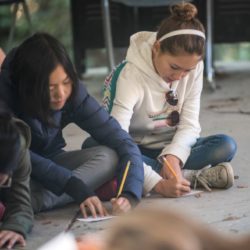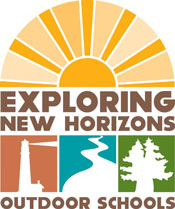 Nature Journaling as a Multidisciplinary Tool
Nature Journaling as a Multidisciplinary Tool
A nature journal is a place to record and reflect on observations made in nature. Bringing the nature journal into the classroom is a great way to teach the Next Generation Science Standards. Through a combination of sketching, labeling, recording thoughts, and forming questions and explanations, students can turn a trip to the school yard into a journey of scientific inquiry and self expression. Keeping a nature journal helps student hone their scientific skills of observation and documentation while connecting to the natural world.
Opening the World through Journaling: Integrating art, science, and language arts is a fantastic resource for nature journaling in the classroom. It was developed by Bay Area naturalist John Muir Laws with the support of the California Native Plant society and several collaborators including former ENH naturalist Emilie “Dipper” Lygren. It is available as a free download along with other resources at the John Muir Laws website. This curriculum is aligned with California standards for grades 3-7 but appropriate for all ages. The activities and games in this guide help students record their observations and reflections through drawing and writing and putting together a self-created field guide. To join up with other people of all ages in the Bay Area, John Muir Laws hosts a Nature Journal Club with free drawing classes and monthly weekend field trips. These events are free and open to all experience levels. This is a great way for people to get outside and nature journal together. You can also gain inspiration and post your students’ entries on the Nature Journal Facebook page. This is a network of people from all over the world who post their journal pages and encourage each other.
In addition to aligning with science and literature curriculum in the classroom, nature journaling has many other benefits for students. Taking time in nature, even simply being outside in the school yard, can help reduce stress. Nature journaling is an activity that helps students be more mindful and increase awareness. You do not need fancy supplies, just paper and pencil and you can do it anywhere. It can also help increase interest in environmental conservation as students develop a relationship with the natural world. Nature journaling can also be a part of a citizen science project, such as Project Budburst. This project helps monitor plants as the seasons change to help gather data on how plants respond to climate change.
Happy Journaling!
